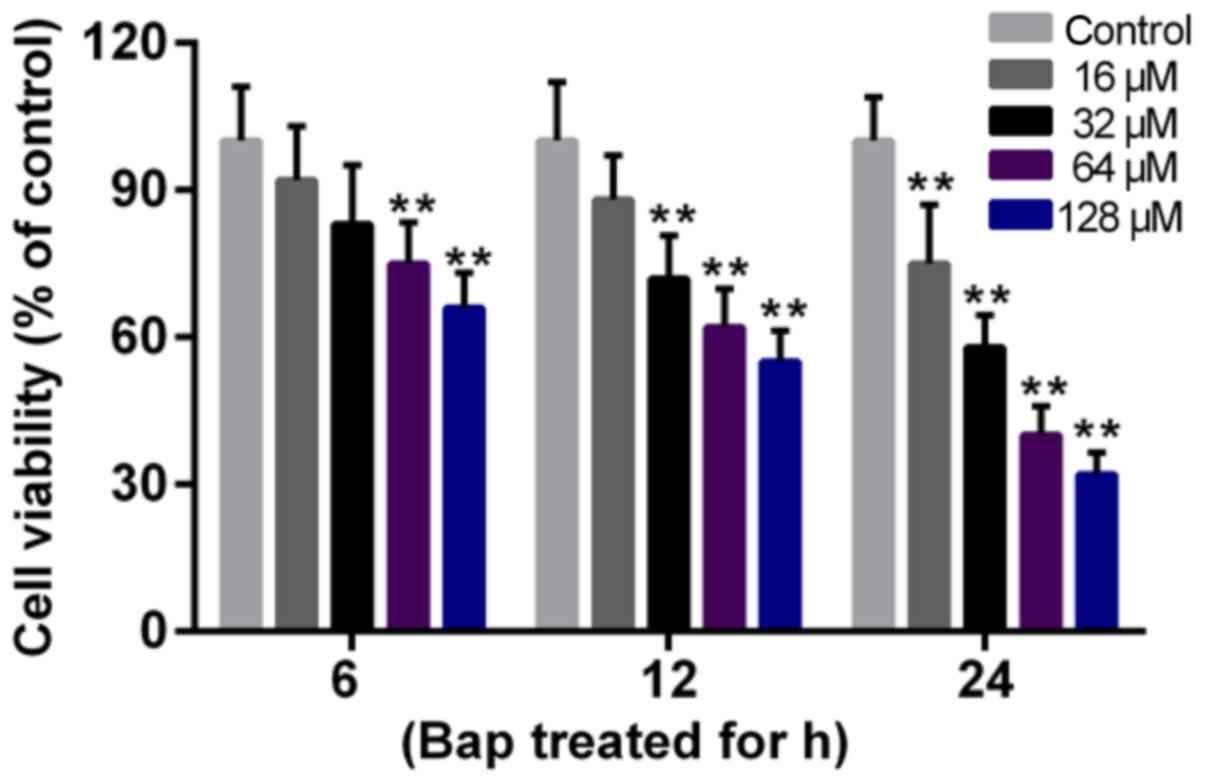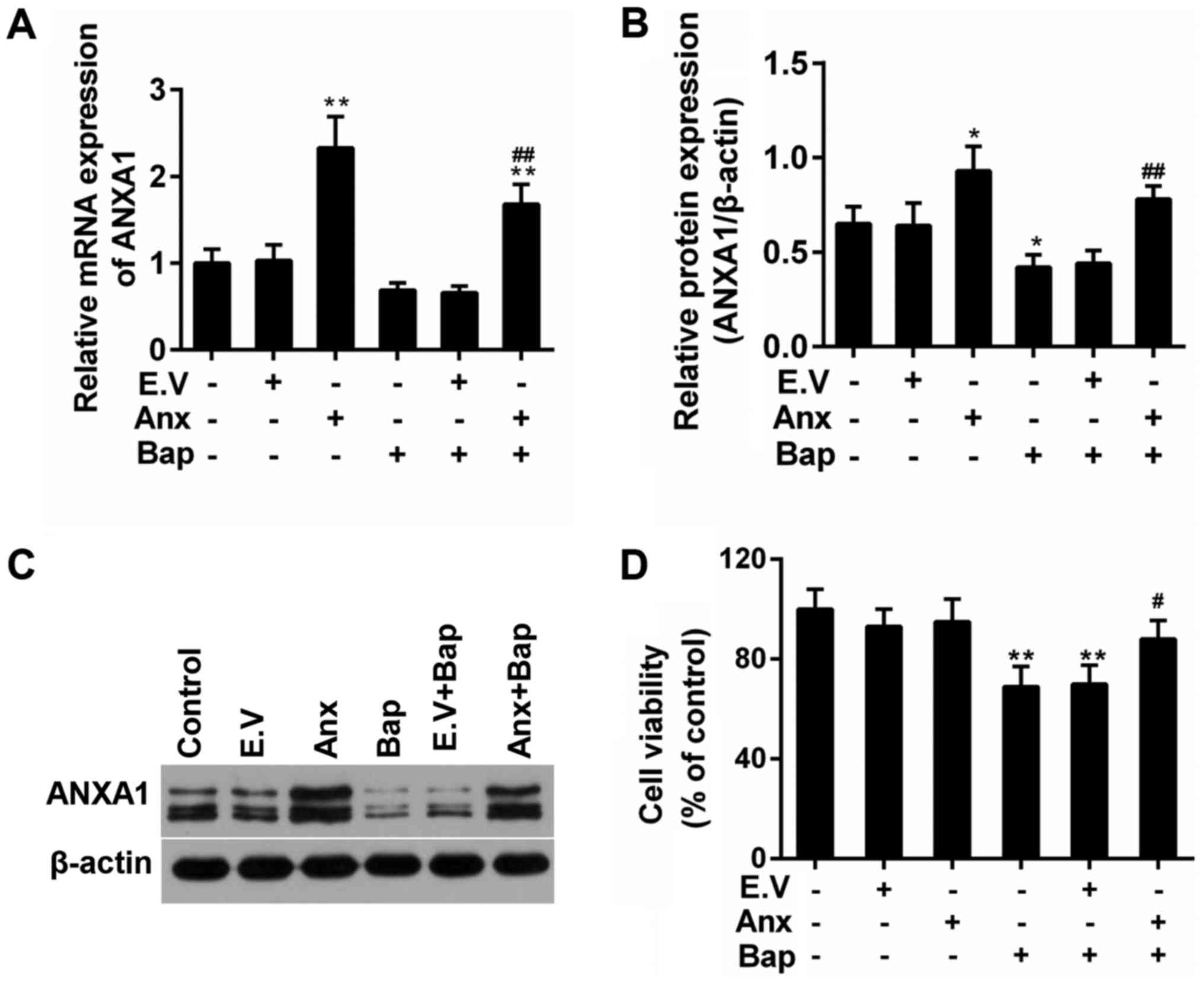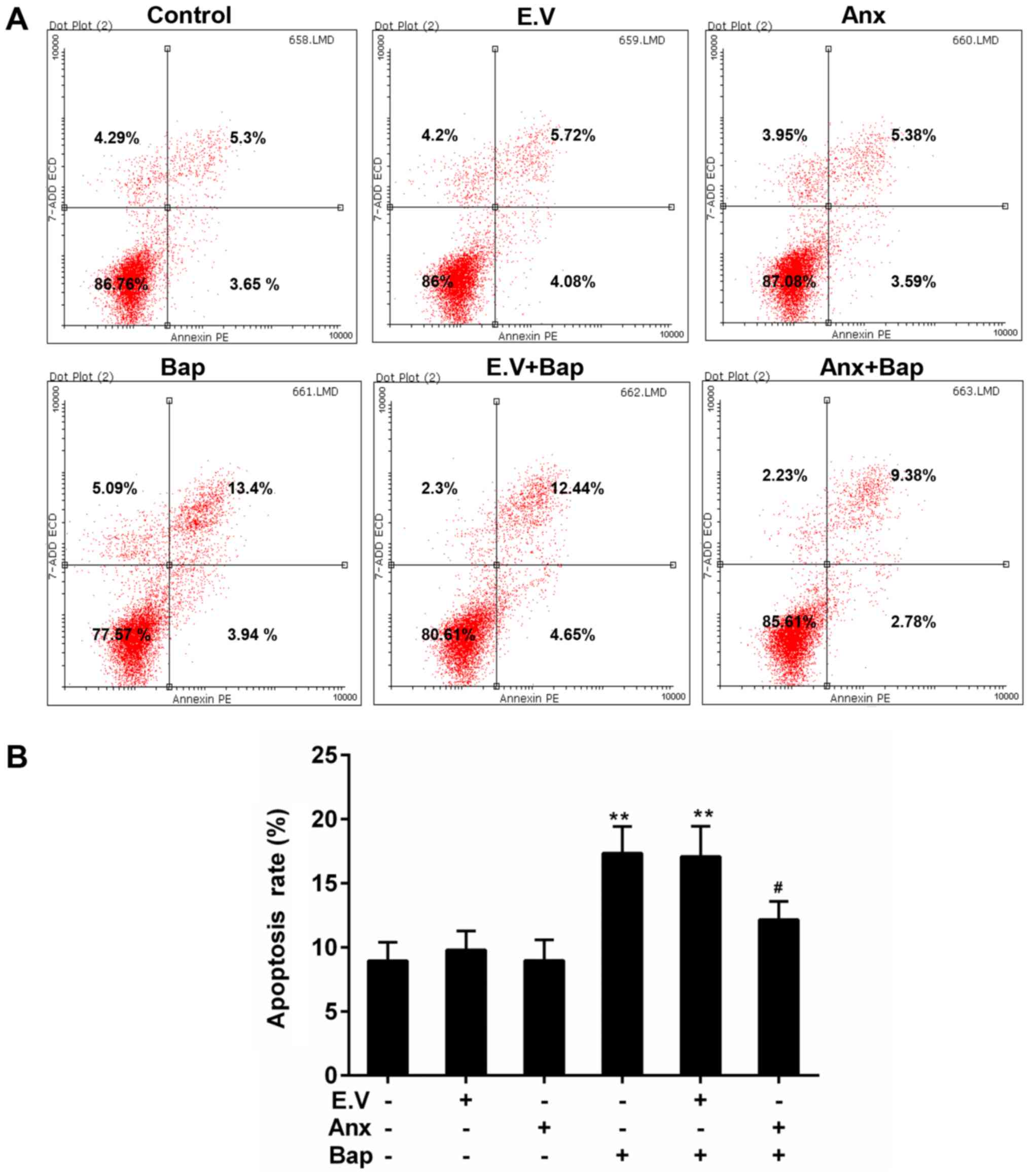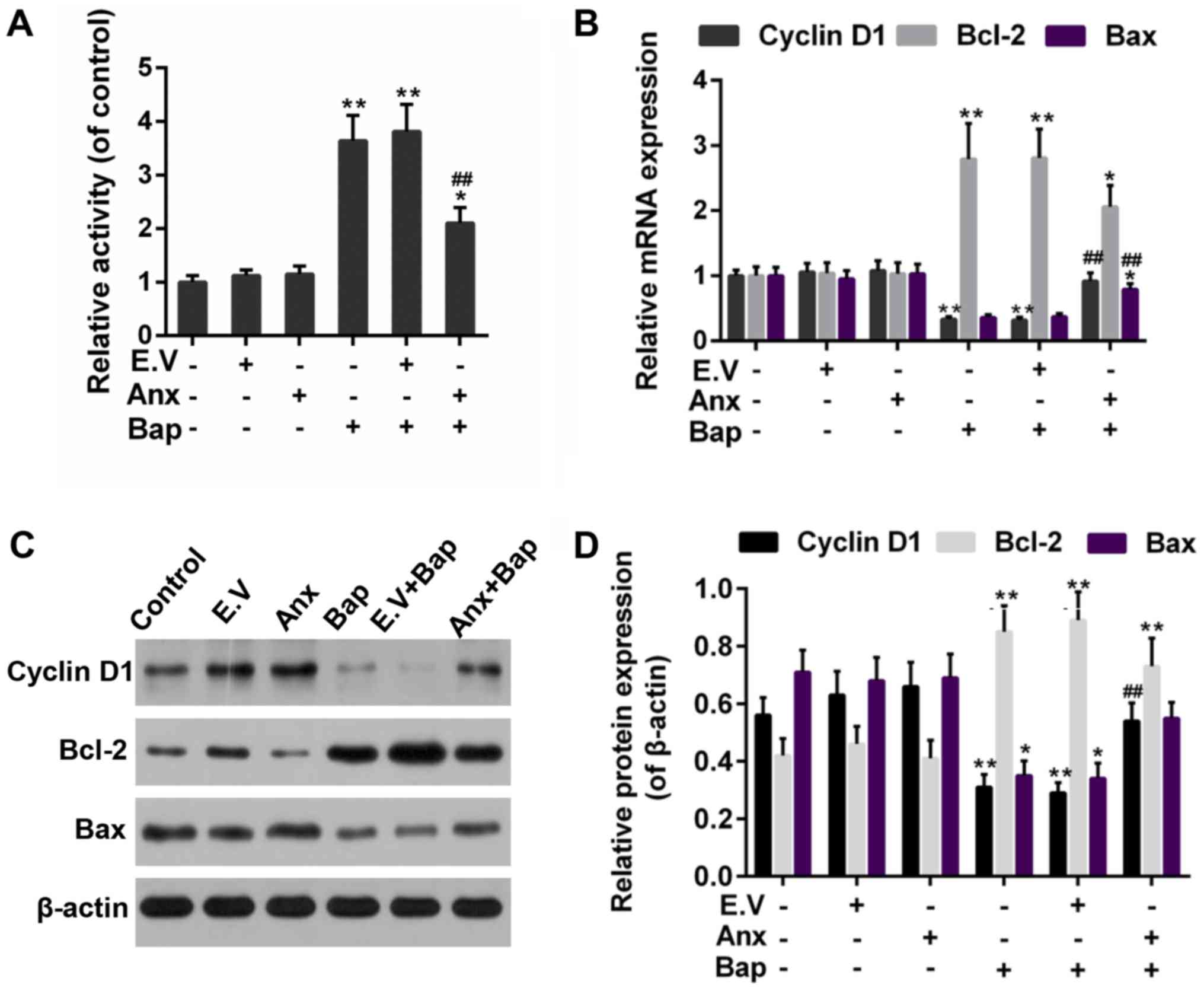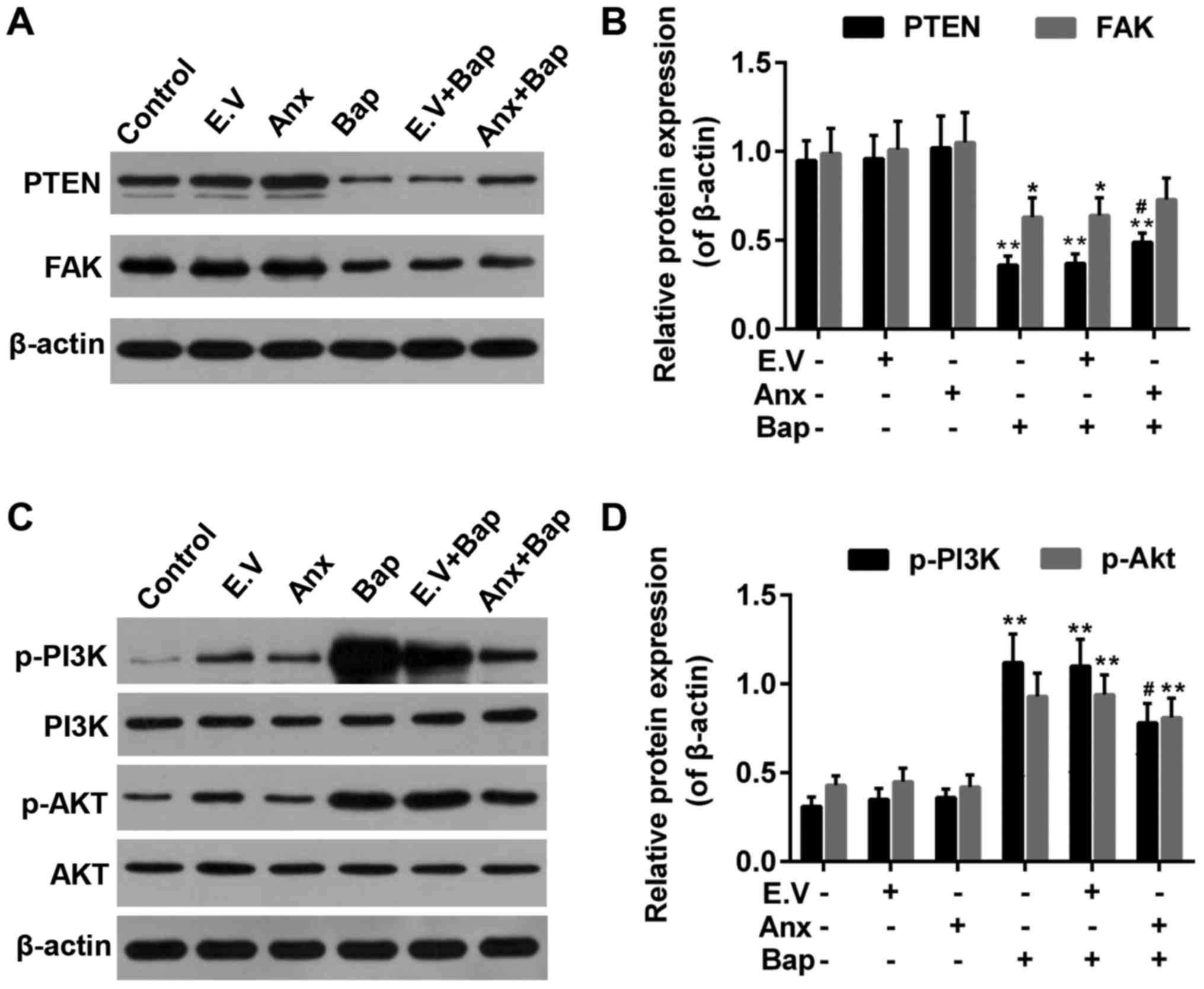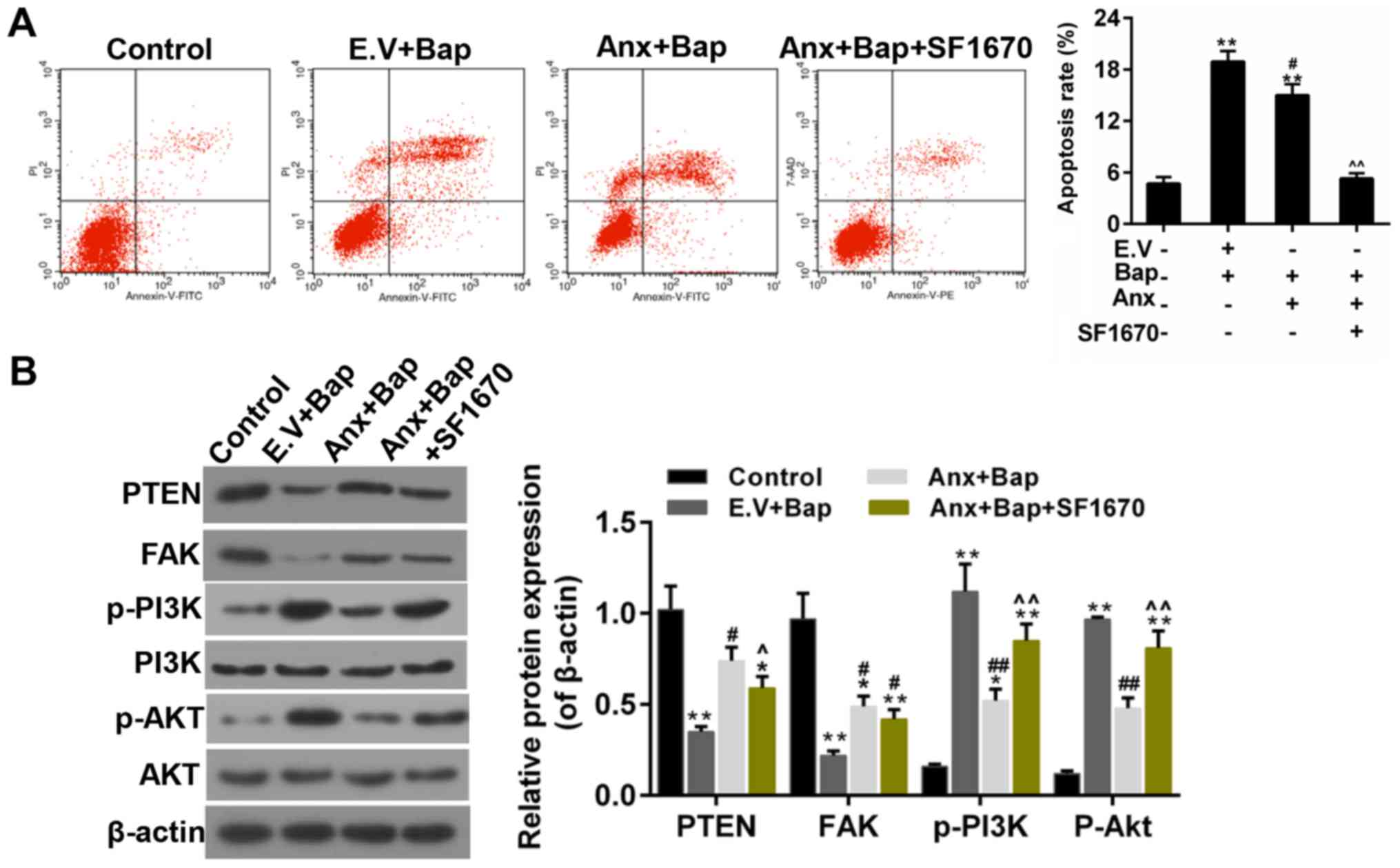|
1
|
Anandan C, Nurmatov U, van Schayck OC and
Sheikh A: Is the prevalence of asthma declining? Systematic review
of epidemiological studies. Allergy. 65:152–167. 2010. View Article : Google Scholar : PubMed/NCBI
|
|
2
|
Worldwide variation in prevalence of
symptoms of asthma, allergic rhinoconjunctivitis, and atopic
eczema: ISAAC. The International Study of Asthma and Allergies in
Childhood (ISAAC) Steering Committee. Lancet. 351:1225–1232. 1998.
View Article : Google Scholar : PubMed/NCBI
|
|
3
|
Kay AB, Phipps S and Robinson DS: A role
for eosinophils in airway remodelling in asthma. Trends Immunol.
25:477–482. 2004. View Article : Google Scholar : PubMed/NCBI
|
|
4
|
Capra V and Rovati GE: Rosuvastatin
inhibits human airway smooth muscle cells mitogenic response to
eicosanoid contractile agents. Pulm Pharmacol Ther. 27:10–16. 2014.
View Article : Google Scholar : PubMed/NCBI
|
|
5
|
Al-Muhsen S, Johnson JR and Hamid Q:
Remodeling in asthma. J Allergy Clin Immunol. 128:451–464. 2011.
View Article : Google Scholar : PubMed/NCBI
|
|
6
|
Uno S and Makishima M: Benzo[a]pyrene
toxicity and inflammatory disease. Curr Rheumatol Rev. 5:266–271.
2009. View Article : Google Scholar
|
|
7
|
Dong JI and Bozzelli JW: Benzo(a)pyrene
levels in several indoor environments with kerosene heaters and
wood-burning fireplaces. Chemosphere. 18:1829–1836. 1989.
View Article : Google Scholar
|
|
8
|
Qamar W, Khan R, Khan AQ, Rehman MU,
Lateef A, Tahir M, Ali F and Sultana S: Alleviation of lung injury
by glycyrrhizic acid in benzo(a)pyrene exposed rats: Probable role
of soluble epoxide hydrolase and thioredoxin reductase. Toxicology.
291:25–31. 2012. View Article : Google Scholar : PubMed/NCBI
|
|
9
|
Burhans WC and Heintz NH: The cell cycle
is a redox cycle: Linking phase-specific targets to cell fate. Free
Radic Biol Med. 47:1282–1293. 2009. View Article : Google Scholar : PubMed/NCBI
|
|
10
|
Michaeloudes C, Sukkar MB, Khorasani NM,
Bhavsar PK and Chung KF: TGF-β regulates Nox4, MnSOD and catalase
expression, and IL-6 release in airway smooth muscle cells. Am J
Physiol Lung Cell Mol Physiol. 300:L295–L304. 2011. View Article : Google Scholar : PubMed/NCBI
|
|
11
|
Kirkham P and Rahman I: Oxidative stress
in asthma and COPD: Antioxidants as a therapeutic strategy.
Pharmacol Ther. 111:476–494. 2006. View Article : Google Scholar : PubMed/NCBI
|
|
12
|
Schieber M and Chandel NS: ROS function in
redox signaling and oxidative stress. Curr Biol. 24:R453–R462.
2014. View Article : Google Scholar : PubMed/NCBI
|
|
13
|
Kannan K and Jain SK: Oxidative stress and
apoptosis. Pathophysiology. 7:153–163. 2000. View Article : Google Scholar : PubMed/NCBI
|
|
14
|
Keniry M and Parsons R: The role of PTEN
signaling perturbations in cancer and in targeted therapy.
Oncogene. 27:5477–5485. 2008. View Article : Google Scholar : PubMed/NCBI
|
|
15
|
Frisch SM, Vuori K, Ruoslahti E and
Chan-Hui PY: Control of adhesion-dependent cell survival by focal
adhesion kinase. J Cell Biol. 134:793–799. 1996. View Article : Google Scholar : PubMed/NCBI
|
|
16
|
Tamura M, Gu J, Matsumoto K, Aota S,
Parsons R and Yamada KM: Inhibition of cell migration, spreading,
and focal adhesions by tumor suppressor PTEN. Science.
280:1614–1617. 1998. View Article : Google Scholar : PubMed/NCBI
|
|
17
|
Miyoshi K, Yanagi S, Kawahara K, Nishio M,
Tsubouchi H, Imazu Y, Koshida R, Matsumoto N, Taguchi A, Yamashita
S, et al: Epithelial Pten controls acute lung injury and fibrosis
by regulating alveolar epithelial cell integrity. Am J Respir Crit
Care Med. 187:262–275. 2013. View Article : Google Scholar : PubMed/NCBI
|
|
18
|
Maehama T and Dixon JE: The tumor
suppressor, PTEN/MMAC1, dephosphorylates the lipid second
messenger, phosphatidylinositol 3,4,5-trisphosphate. J Biol Chem.
273:13375–13378. 1998. View Article : Google Scholar : PubMed/NCBI
|
|
19
|
Schaller MD: Signaling through the focal
adhesion kinase. Soc Gen Physiol Ser. 52:241–255. 1997.PubMed/NCBI
|
|
20
|
Levkau B, Herren B, Koyama H, Ross R and
Raines EW: Caspase-mediated cleavage of focal adhesion kinase
pp125FAK and disassembly of focal adhesions in human endothelial
cell apoptosis. J Exp Med. 187:579–586. 1998. View Article : Google Scholar : PubMed/NCBI
|
|
21
|
Sonoda Y, Watanabe S, Matsumoto Y,
Aizu-Yokota E and Kasahara T: FAK is the upstream signal protein of
the phosphatidylinositol 3-kinase-Akt survival pathway in hydrogen
peroxide-induced apoptosis of a human glioblastoma cell line. J
Biol Chem. 274:10566–10570. 1999. View Article : Google Scholar : PubMed/NCBI
|
|
22
|
Goulding NJ, Godolphin JL, Sampson MB,
Maddison PJ and Flower RJ: Hydrocortisone induces lipocortin 1
production by peripheral blood mononuclear cells in vivo in man.
Biochem Soc Trans. 18:306–307. 1990. View Article : Google Scholar : PubMed/NCBI
|
|
23
|
Chatterjee BE, Yona S, Rosignoli G, Young
RE, Nourshargh S, Flower RJ and Perretti M: Annexin 1-deficient
neutrophils exhibit enhanced transmigration in vivo and increased
responsiveness in vitro. J Leukoc Biol. 78:639–646. 2005.
View Article : Google Scholar : PubMed/NCBI
|
|
24
|
Perretti M, Ahluwalia A, Harris JG,
Goulding NJ and Flower RJ: Lipocortin-1 fragments inhibit
neutrophil accumulation and neutrophil-dependent edema in the
mouse. A qualitative comparison with an anti-CD11b monoclonal
antibody. J Immunol. 151:4306–4314. 1993.PubMed/NCBI
|
|
25
|
D'Amico M, Di Filippo C, La M, Solito E,
McLean PG, Flower RJ, Oliani SM and Perretti M: Lipocortin 1
reduces myocardial ischemia-reperfusion injury by affecting local
leukocyte recruitment. FASEB J. 14:1867–1869. 2000. View Article : Google Scholar : PubMed/NCBI
|
|
26
|
La M, D'Amico M, Bandiera S, Di Filippo C,
Oliani SM, Gavins FN, Flower RJ and Perretti M: Annexin 1 peptides
protect against experimental myocardial ischemia-reperfusion:
Analysis of their mechanism of action. FASEB J. 15:2247–2256. 2001.
View Article : Google Scholar : PubMed/NCBI
|
|
27
|
Martin GR, Perretti M, Flower RJ and
Wallace JL: Annexin-1 modulates repair of gastric mucosal injury.
Am J Physiol Gastrointest Liver Physiol. 294:G764–G769. 2008.
View Article : Google Scholar : PubMed/NCBI
|
|
28
|
Li Y, Prasad A, Jia Y, Roy SG, Loison F,
Mondal S, Kocjan P, Silberstein LE, Ding S and Luo HR:
Pre-treatment with phosphatase and tensin homolog deleted on
chromosome 10 (PTEN) inhibitor SF1670 augments the efficacy of
granulocyte transfusion in a clinically relevant mouse model.
Blood. 117:6702–6713. 2011. View Article : Google Scholar : PubMed/NCBI
|
|
29
|
Livak KJ and Schmittgen TD: Analysis of
relative gene expression data using real-time quantitative PCR and
the 2(-Delta Delta C(T)) method. Methods. 25:402–408. 2001.
View Article : Google Scholar : PubMed/NCBI
|
|
30
|
Feng L, Le J, Lan Y, Pang W and Wang C:
The role of ROS in human bronchial epithelial cell injury caused by
gunpowder smoke. Lab Immun Clin Med. 17:27–29. 2010.
|
|
31
|
Chandra J, Samali A and Orrenius S:
Triggering and modulation of apoptosis by oxidative stress. Free
Radic Biol Med. 29:323–333. 2000. View Article : Google Scholar : PubMed/NCBI
|
|
32
|
Sedlak TW, Oltvai ZN, Yang E, Wang K,
Boise LH, Thompson CB and Korsmeyer SJ: Multiple Bcl-2 family
members demonstrate selective dimerizations with Bax. Proc Natl
Acad Sci USA. 92:7834–7838. 1995. View Article : Google Scholar : PubMed/NCBI
|
|
33
|
Albanese C, D'Amico M, Reutens AT, Fu M,
Watanabe G, Lee RJ, Kitsis RN, Henglein B, Avantaggiati M,
Somasundaram K, et al: Activation of the cyclin D1 gene by the
E1A-associated protein p300 through AP-1 inhibits cellular
apoptosis. J Biol Chem. 274:34186–34195. 1999. View Article : Google Scholar : PubMed/NCBI
|
|
34
|
Xia H, Diebold D, Nho R, Perlman D,
Kleidon J, Kahm J, Avdulov S, Peterson M, Nerva J, Bitterman P and
Henke C: Pathological integrin signaling enhances proliferation of
primary lung fibroblasts from patients with idiopathic pulmonary
fibrosis. J Exp Med. 205:1659–1672. 2008. View Article : Google Scholar : PubMed/NCBI
|
|
35
|
White ES, Atrasz RG, Hu B, Phan SH,
Stambolic V, Mak TW, Hogaboam CM, Flaherty KR, Martinez FJ, Kontos
CD and Toews GB: Negative regulation of myofibroblast
differentiation by PTEN (Phosphatase and Tensin Homolog Deleted on
chromosome 10). Am J Respir Crit Care Med. 173:112–121. 2006.
View Article : Google Scholar : PubMed/NCBI
|
|
36
|
Sonoda Y, Matsumoto Y, Funakoshi M,
Yamamoto D, Hanks SK and Kasahara T: Anti-apoptotic role of Focal
Adhesion Kinase (FAK). Induction of inhibitor-of-apoptosis proteins
and apoptosis suppression by the overexpression of FAK in a human
leukemic cell line, HL-60. J Biol Chem. 275:16309–16315. 2000.
View Article : Google Scholar : PubMed/NCBI
|
|
37
|
Alexandrov K, Rojas M and Satarug S: The
critical DNA damage by benzo(a)pyrene in lung tissues of smokers
and approaches to preventing its formation. Toxicol Lett.
198:63–68. 2010. View Article : Google Scholar : PubMed/NCBI
|
|
38
|
Podechard N, Lecureur V, Le Ferrec E,
Guenon I, Sparfel L, Gilot D, Gordon JR, Lagente V and Fardel O:
Interleukin-8 induction by the environmental contaminant
benzo(a)pyrene is aryl hydrocarbon receptor-dependent and leads to
lung inflammation. Toxicol Lett. 177:130–137. 2008. View Article : Google Scholar : PubMed/NCBI
|
|
39
|
Babbin BA, Laukoetter MG, Nava P, Koch S,
Lee WY, Capaldo CT, Peatman E, Severson EA, Flower RJ, Perretti M,
et al: Annexin A1 regulates intestinal mucosal injury,
inflammation, and repair. J Immunol. 181:5035–5044. 2008.
View Article : Google Scholar : PubMed/NCBI
|
|
40
|
Nadeem A, Masood A and Siddiqui N:
Oxidant-antioxidant imbalance in asthma: Scientific evidence,
epidemiological data and possible therapeutic options. Ther Adv
Respir Dis. 2:215–235. 2008. View Article : Google Scholar : PubMed/NCBI
|
|
41
|
Leoni G, Alam A, Neumann PA, Lambeth JD,
Cheng G, McCoy J, Hilgarth RS, Kundu K, Murthy N, Kusters D, et al:
Annexin A1, formyl peptide receptor, and NOX1 orchestrate
epithelial repair. J Clin Invest. 123:443–454. 2013. View Article : Google Scholar : PubMed/NCBI
|
|
42
|
Park EJ, Yi J, Chung KH, Ryu DY, Choi J
and Park K: Oxidative stress and apoptosis induced by titanium
dioxide nanoparticles in cultured BEAS-2B cells. Toxicol Lett.
180:222–229. 2008. View Article : Google Scholar : PubMed/NCBI
|
|
43
|
Truong-Tran AQ, Grosser D, Ruffin RE,
Murgia C and Zalewski PD: Apoptosis in the normal and inflamed
airway epithelium: Role of zinc in epithelial protection and
procaspase-3 regulation. Biochem Pharmacol. 66:1459–1468. 2003.
View Article : Google Scholar : PubMed/NCBI
|
|
44
|
Stambolic V, Suzuki A, de la Pompa JL,
Brothers GM, Mirtsos C, Sasaki T, Ruland J, Penninger JM,
Siderovski DP and Mak TW: Negative regulation of PKB/Akt-dependent
cell survival by the tumor suppressor PTEN. Cell. 95:29–39. 1998.
View Article : Google Scholar : PubMed/NCBI
|
|
45
|
Tiozzo C, De Langhe S, Yu M, Londhe VA,
Carraro G, Li M, Li C, Xing Y, Anderson S, Borok Z, et al: Deletion
of Pten expands lung epithelial progenitor pools and confers
resistance to airway injury. Am J Respir Crit Care Med.
180:701–712. 2009. View Article : Google Scholar : PubMed/NCBI
|
|
46
|
You D, Xin J, Volk A, Wei W, Schmidt R,
Scurti G, Nand S, Breuer EK, Kuo PC, Breslin P, et al: FAK mediates
a compensatory survival signal parallel to PI3K-AKT in PTEN-null
T-ALL cells. Cell Rep. 10:2055–2068. 2015. View Article : Google Scholar : PubMed/NCBI
|
|
47
|
Sonoda Y, Kasahara T, Yokota-Aizu E, Ueno
M and Watanabe S: A suppressive role of p125FAK protein tyrosine
kinase in hydrogen peroxide-induced apoptosis of T98G cells.
Biochem Biophys Res Commun. 241:769–774. 1997. View Article : Google Scholar : PubMed/NCBI
|
|
48
|
Wu W: DLX4 homeoprotein promotes PI3K/Akt
anti-apoptosis pathway in ER negative breast cancer cells through
upregulation of VEGFA. Dissert Thes-Gradwork. 2010.
|
|
49
|
Wang XQ, Yao RQ, Liu X, Huang JJ, Qi DS
and Yang LH: Quercetin protects oligodendrocyte precursor cells
from oxygen/glucose deprivation injury in vitro via the activation
of the PI3K/Akt signaling pathway. Brain Res Bull. 86:277–284.
2011. View Article : Google Scholar : PubMed/NCBI
|
|
50
|
Qin S, Inazu T, Takata M, Kurosaki T,
Homma Y and Yamamura H: Cooperation of tyrosine kinases p72syk and
p53/56lyn regulates calcium mobilization in chicken B cell oxidant
stress signaling. Eur J Biochem. 236:443–449. 1996. View Article : Google Scholar : PubMed/NCBI
|
|
51
|
Suzuki Y, Ohsugi K and Ono Y: Oxidative
stress triggers tyrosine phosphorylation in B cells through a
redox- and inflammatory cytokine-sensitive mechanism. Immunology.
87:396–401. 1996. View Article : Google Scholar : PubMed/NCBI
|
|
52
|
Sturrock A, Huecksteadt TP, Norman K,
Sanders K, Murphy TM, Chitano P, Wilson K, Hoidal JR and Kennedy
TP: Nox4 mediates TGF-beta1-induced retinoblastoma protein
phosphorylation, proliferation, and hypertrophy in human airway
smooth muscle cells. Am J Physiol Lung Cell Mol Physiol.
292:L1543–L1555. 2007. View Article : Google Scholar : PubMed/NCBI
|



